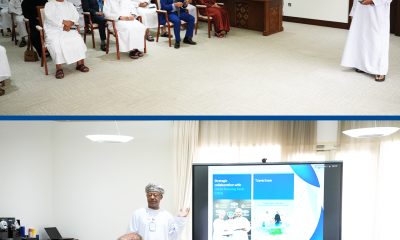News
UK Government Borrowing Reaches World War II Level Highs

In a groundbreaking revelation, the UK Government’s borrowing – the difference between income from taxes and government spending, has hit 14.5% of the GDP, the highest since the end of The Second World War.

The Government Borrowing reached a figure of 303.1 Billion GBP this March, as informed by the UK Office for National Statistics (ONS). Compared to March last year, the borrowings are 250 GBP higher. The Director of The Institute for Fiscal Studies, Paul Johnson stated that while the figure in itself was a record high, it was still better than the anticipated level of around 400 Billion GBP. He attributed the great difference between the Year – on – Year figures to the active government decision to support incomes during the pandemic which, accounted for around 200 Billion GBP worth of spending & reduction in taxes. He anticipates that the figure will only rise due to the default of some COVID support loans.
The levels are predicted to remain high as job support will continue in the UK at least till autumn and, the government is incentivizing investments in machinery and plants for industries by way of massive tax cuts.
To put it in terms of figures, measures to support individuals and businesses during the COVID pandemic accounted for a 27.5% increase in daily spending for the government.
In parallel, the tax and National Insurance receipts fell by approximately 35 Billion GBP, a downfall of 5% compared to the last 12 months. To point toward the significance of where the government stands from a fiscal standpoint, the net public sector debt has reached 2.142 Trillion GBP – which is 97.7% of the GDP.
In spite of such high figures, Michal Stelmach, a senior economist at KPMG UK, stated, “Rising debt is largely an unfortunate consequence of the government’s focus on shielding the economy as much as possible from the impact of Covid-19. However, doing otherwise could have created long-lasting scars which would be far worse for fiscal sustainability.”
Positive Outlook
The IHS Markit/CIPS Purchasing Managers Index (PMI) rose to 60 in April, increasing from 56.4 in March. A figure above 50 is indicative of expansion within the economy.
Combined with the fact that the service sector outgrew the manufacturing sector for the first time since, the beginning of the pandemic, the forecast is that in spite of the high levels of borrowing, the rebound and recovery phase will be equally strong.
-

 Magazines2 months ago
Magazines2 months agoOER – September 2025 Issue
-

 Alamaliktistaad Magazines2 months ago
Alamaliktistaad Magazines2 months agoAlam Al Iktisaad – September 2025 Edition
-

 News1 month ago
News1 month agoKitchenomiKs Secures Investment of US$3.2M Led by Jasoor Ventures
-

 News2 months ago
News2 months agoCent Capital, AI Finance App by ex-AWS Strategist ‘The Beast of Bay Area,’ Launches to End Financial Anxiety, Hits $1M AUM
-

 News2 months ago
News2 months agoOman Inaugurates ‘Hadatha’ – Its All-New Cybersecurity Center
-

 Banking & Finance2 months ago
Banking & Finance2 months agoOman Arab Bank Highlights Its Ongoing Strategic Initiatives and Future Plans
-

 News2 months ago
News2 months agoIEA Expects Global Oil Market to Remain Oversupplied in 2026
-

 Energy1 month ago
Energy1 month agoWLGA Middle East LPG Summit & Expo 2025 to be held at OCEC on November 10 and 11






























